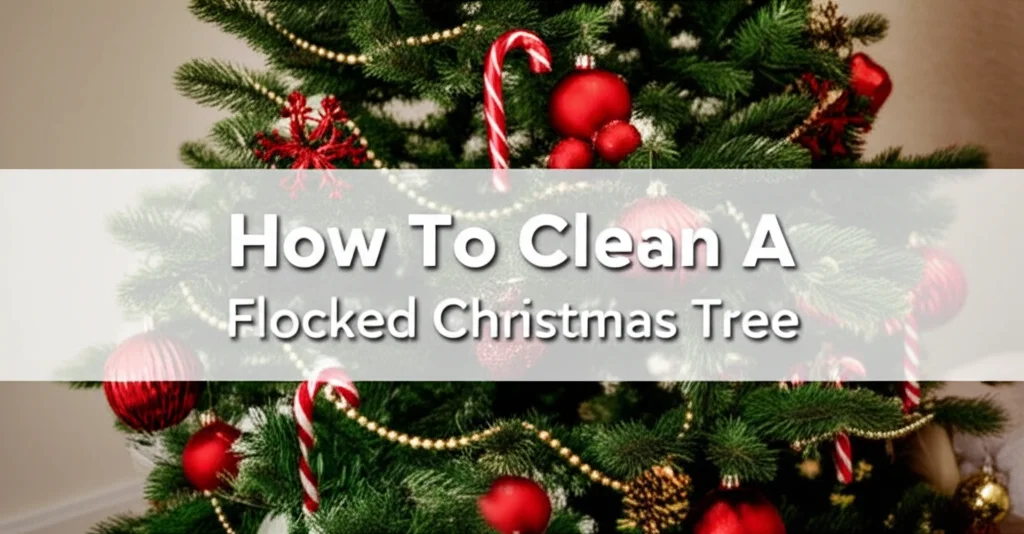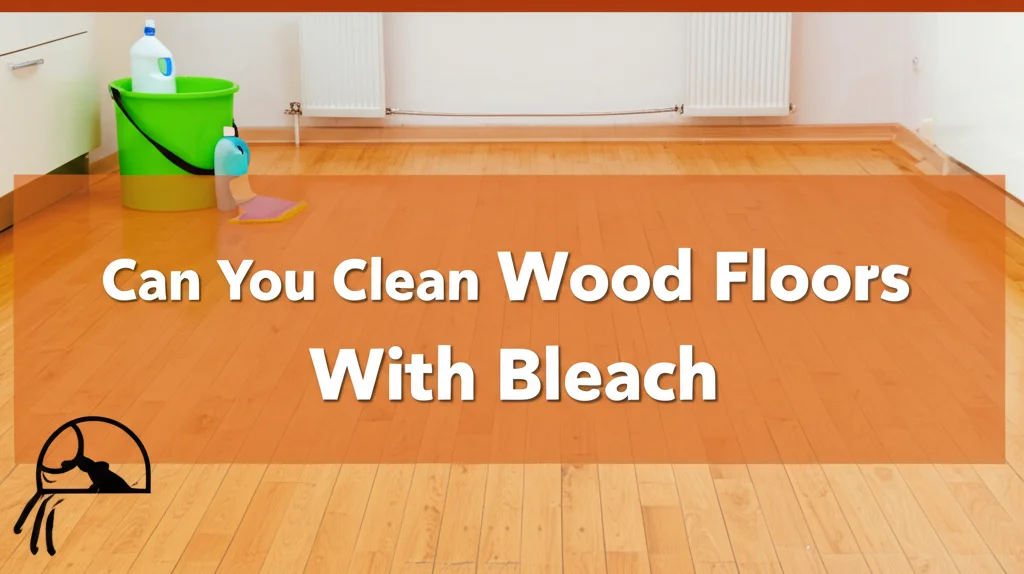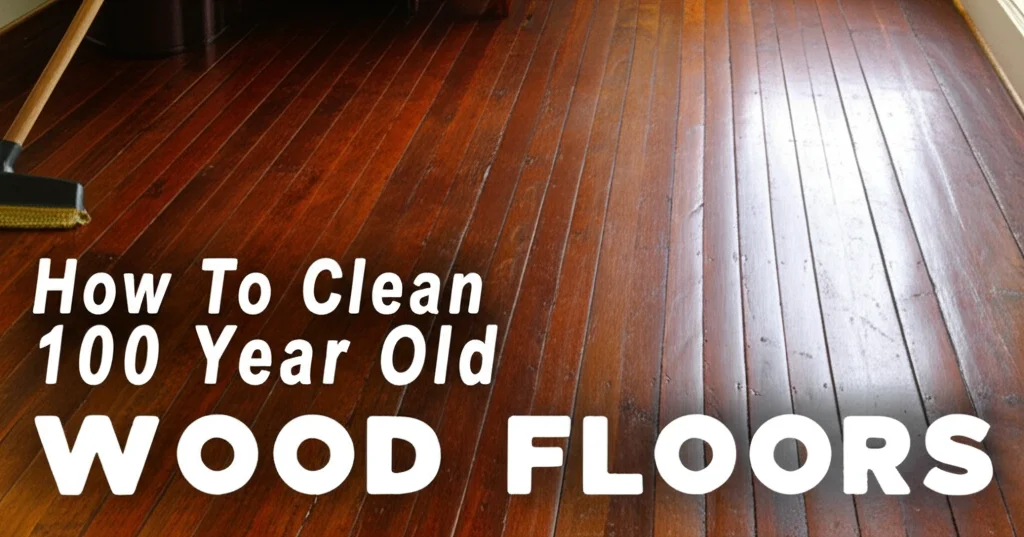· Holiday Cleaning · 14 min read
How To Clean A Flocked Christmas Tree

How to Clean a Flocked Christmas Tree: Complete Care Guide
A flocked Christmas tree, with its magical snow-covered appearance, transforms your home into a winter wonderland during the holiday season. However, maintaining that pristine white coating can become challenging as dust accumulates, pet hair sticks to the branches, or the flocking begins to yellow over time. Proper cleaning techniques are essential to preserve your flocked Christmas tree’s beautiful appearance for years to come.
Whether you’re dealing with a pre-flocked artificial tree, a DIY flocked tree, or wondering how to refresh a yellowing flocked Christmas tree, this comprehensive guide will walk you through everything you need to know. We’ll cover gentle cleaning methods that won’t damage the delicate flocking, storage solutions to prevent deterioration, and specialized approaches for trees with integrated lighting systems.
By following these expert tips and techniques, you’ll be able to keep your flocked Christmas tree looking fresh and beautiful season after season, ensuring your holiday decorations continue to create that perfect snowy atmosphere.
Key Takeaways:
- Use gentle methods like air dusting and soft brushes to preserve flocking
- Never use water on flocked trees with integrated lights
- Store properly in cool, dry areas to prevent yellowing
- Different cleaning techniques are needed for light vs. heavy soiling
Quick Answer: To clean a flocked Christmas tree, use a hairdryer on cool setting or compressed air to blow away dust and debris. For stubborn spots, gently brush with a soft-bristled paintbrush. Avoid water, vacuums, and harsh chemicals that could damage the delicate flocking.
Understanding Flocked Christmas Trees
Before diving into cleaning methods, it’s important to understand what flocking is and how it affects your cleaning approach. Flocking is the process of applying a white, powdery substance to an artificial or real Christmas tree to create the appearance of snow. Modern flocking is typically made from cellulose or plastic materials mixed with flame-retardant chemicals.
Types of Flocked Trees
- Pre-flocked artificial trees: These come with factory-applied flocking that is typically more durable than DIY options.
- Self-flocked trees: Trees that have been flocked at home using flocking kits, spray-on snow, or DIY mixtures.
- Lightly flocked vs. heavily flocked: The amount of flocking affects the cleaning approach needed.
- Flocked trees with integrated lights: Require special attention to prevent electrical hazards.
The delicate nature of flocking presents unique cleaning challenges. The snow-like coating can shed, yellow, or become dirty over time. Understanding your specific type of flocked tree will help determine the most appropriate cleaning method.
Trees with heavy flocking require gentler handling than those with light flocking. Similarly, flocked trees with integrated lights need different care than unlit trees. Age also matters—newer flocked trees typically have more durable flocking than older models.
Essential Supplies for Cleaning a Flocked Christmas Tree
Gathering the right supplies before you start cleaning will make the process more efficient and help prevent damage to your tree’s flocking. Here’s what you’ll need:
- Hairdryer (on cool setting) or compressed air canister for dust removal
- Soft-bristled paintbrush or makeup brush for gentle detail cleaning
- Microfiber cloths for wiping non-flocked parts
- Soft cleaning gloves to protect both your hands and the flocking
- Clean sheet or drop cloth to place under the tree during cleaning
- Storage bag or box specifically designed for artificial Christmas trees
For trees that have started to yellow or need deeper cleaning:
- Dry baking soda for spot cleaning (test in an inconspicuous area first)
- White craft glue and artificial snow for touch-ups
- New flocking material if significant restoration is needed
Avoid household cleaning products, water, or any liquid cleaners as these can damage the flocking, cause discoloration, or create electrical hazards if your tree has built-in lights.
Having these supplies ready before you begin will make the cleaning process smoother and help prevent last-minute improvisation that might damage your tree.
Basic Cleaning: Dust and Debris Removal
Regular maintenance cleaning is essential for keeping your flocked Christmas tree looking fresh throughout the holiday season and ready for the next year. Here’s how to safely remove dust and light debris:
Step-by-Step Dust Removal Process
- Prepare your space by laying a clean sheet or drop cloth around the base of the tree to catch falling dust and flocking.
- Start from the top and work your way down to prevent dust from falling onto already-cleaned sections.
- Use a hairdryer on the cool setting held at least 12 inches away from the tree to blow away loose dust and debris.
- Alternatively, use compressed air cans for more precise cleaning, especially for hard-to-reach areas.
- For stubborn dust, gently use a soft-bristled paintbrush or makeup brush to loosen debris without disturbing the flocking.
Frequency Recommendations
- During display season: A quick air dusting every 1-2 weeks keeps your tree looking fresh.
- Before storage: Always clean your tree thoroughly before packing it away.
- After unpacking: Give your tree a gentle cleaning after removing it from storage to refresh its appearance.
Avoid using vacuum cleaners, even with brush attachments, as they can be too harsh and pull off flocking. Similarly, avoid dusting with cloths that might catch on branches or remove flocking.
For trees with integrated lights, be especially careful around light fixtures and wiring. Always ensure the tree is unplugged before cleaning, and never use any moisture around electrical components.
This regular maintenance not only keeps your tree looking beautiful but also extends its lifespan by preventing dust accumulation that can discolor or degrade the flocking over time.
Dealing with Yellowing Flocking
One of the most common concerns with flocked Christmas trees is yellowing over time. This discoloration typically occurs due to age, improper storage, or exposure to smoke, sunlight, or humid conditions. Here’s how to address a flocked Christmas tree that has turned yellow:
Understanding Why Flocking Yellows
- Exposure to sunlight: UV rays can break down and yellow the white flocking material
- Cigarette smoke or cooking fumes: Can discolor and embed in the flocking
- Moisture and humidity: Creates an environment for yellowing and potential mold growth
- Heat exposure: Can cause chemical changes in the flocking material
- Age: Over time, most flocking materials naturally begin to yellow
Refreshing Yellowed Flocking
For mild yellowing:
- Try a gentle application of dry baking soda using a soft brush
- Let it sit for a few hours, then blow off with cool air
- Test this method on an inconspicuous area first
For moderate to severe yellowing, you have a few options:
- Touch-up with new flocking: Apply commercial flocking spray to yellowed areas
- Cover with craft snow: Use artificial decorative snow to mask yellowed areas
- Strategic ornament placement: Arrange decorations to conceal the most yellowed portions
- Partial re-flocking: Apply new flocking material to the most visible sections
When yellowing is extensive, it might be time to consider how to fix a white Christmas tree turned yellow or invest in a new tree, as complete re-flocking can be labor-intensive and might not produce ideal results.
Prevention is the best approach—proper storage in a cool, dry place away from sunlight in a protective bag or box can significantly extend the pristine white appearance of your flocked tree.
How to Clean a Flocked Christmas Tree with Lights
Cleaning a pre-lit flocked Christmas tree requires extra caution to avoid damaging both the flocking and the electrical components. Follow these specialized steps for safe and effective cleaning:
Safety First Approach
- Always unplug the tree completely before any cleaning attempt
- Check for damaged wires or light fixtures before cleaning and address any issues
- Never use water or liquid cleaners on a pre-lit tree, even if the lights are marketed as waterproof
- Allow 24 hours after cleaning before plugging in again to ensure any static or disturbed components have settled
Cleaning Around Lights
- Use compressed air to blow dust from around light fixtures without direct contact
- Gently brush around light sockets with a clean, dry makeup brush
- For stuck-on debris near lights, use a cotton swab very carefully without applying pressure
- Clean the non-flocked portions of light strings with a barely damp microfiber cloth, then immediately dry
Frequency and Maintenance
- Test all lights before cleaning to identify any sections that need repair
- Clean pre-lit flocked trees less frequently than unlit trees to minimize disturbance
- Consider using a light dust cover when the tree is stored to minimize cleaning needs
If your pre-lit flocked tree has developed an unpleasant musty smell, it might indicate that moisture has affected the electrical components. In such cases, it’s safer to have the tree professionally inspected or consider replacement rather than attempting deep cleaning yourself.
Remember that most manufacturer warranties for pre-lit trees become void if the tree has been cleaned with water or liquid solutions, so always stick to dry cleaning methods to maintain both safety and warranty coverage.
Specialized Cleaning Situations
Beyond routine maintenance, your flocked Christmas tree may encounter specific cleaning challenges. Here’s how to handle some common specialized cleaning situations:
Pet Hair and Dander
Pet owners often wonder how to remove pet hair that seems magnetically attracted to flocked trees:
- Use rubber gloves to gently pass over branches—the static electricity will help collect hair
- Try a roll of packaging tape wrapped around your hand (sticky side out) and lightly pat affected areas
- Consider placing the tree in a less accessible location or using a decorative fence around the base to minimize pet contact
Smoke or Cooking Residue
If your tree has absorbed smoke from fireplaces or cooking fumes:
- Place a few bowls of baking soda near the tree for 24-48 hours to absorb odors
- For light residue, try the cool blow dryer method with more persistence
- Severe smoke damage may require partial re-flocking of the most affected areas
Addressing Accidents
For trees that have experienced mishaps:
- Spilled drinks: Blot immediately with dry paper towels (do not rub), then allow to fully dry before using compressed air to fluff affected areas
- Candle wax: Allow to fully harden, then gently chip away larger pieces and use cool air to blow away remaining particles
- Ornament color transfer: Try a very gentle application of dry baking soda with a soft brush
Cleaning After Storage Issues
If you discover your tree has been stored improperly:
- Musty smells: Air out in a well-ventilated, low-humidity area for several days
- Crushed flocking: Try to revive with gentle brushing and cool air
- Insect issues: Remove the tree to an outdoor area, thoroughly clean with air, and consider placing cedar blocks near the tree during future storage
For situations involving water damage or extensive soiling, consult how to clean up after a house flood for additional guidance on salvaging holiday decorations.
Proper Storage to Minimize Future Cleaning
The way you store your flocked Christmas tree significantly impacts how much cleaning it will need next season and how long the flocking will maintain its bright white appearance. Follow these storage best practices:
Preparation for Storage
- Clean thoroughly before storing using the gentle methods described earlier
- Allow time to dry completely if any moisture has been introduced (at least 24-48 hours)
- Remove all decorations and lights (if not pre-lit) to prevent color transfer and damage
- Gently compress branches as recommended by the manufacturer to avoid unnecessary stress on flocked surfaces
Optimal Storage Conditions
- Temperature control: Store in a cool, dry area—avoid attics that reach high temperatures
- Humidity management: Basements can be too humid; use dehumidifiers if necessary
- Light exposure: Store away from direct sunlight to prevent yellowing
- Pest prevention: Consider adding cedar blocks or other natural pest deterrents in storage area
Storage Solutions
- Original box with dividers: Often the best option if you’ve kept it
- Purpose-made tree bags: Invest in a quality storage bag specifically designed for artificial trees
- Upright storage bags: Allow storage without disassembly but require more space
- Compression storage bags: Work for some trees but may damage heavily flocked varieties
For additional storage ideas, consider how to clean skylights for tips on maintaining clear storage areas in spaces with overhead lighting.
Properly wrapped trees stored in optimal conditions can maintain their beautiful appearance for 5-10 years or more, significantly reducing the need for intensive cleaning or flocking replacement.
Maintaining vs. Replacing: When to Clean and When to Buy New
Even with the best care, flocked Christmas trees eventually reach a point where cleaning is no longer effective. Understanding when to clean and when to replace can save time, money, and frustration:
Signs It’s Time for Replacement
- Excessive flocking loss: More than 30% of the flocking has fallen off despite gentle handling
- Widespread yellowing: Yellowing that affects most of the tree and doesn’t respond to cleaning
- Structural issues: Branches that no longer hold position or a trunk that has become unstable
- Electrical problems: For pre-lit trees, wiring issues that can’t be easily repaired
- Persistent odors: Musty or chemical smells that don’t dissipate with airing out
Cost-Benefit Analysis
Consider these factors when deciding between cleaning and replacement:
- Good quality flocked trees typically last 5-8 years with proper care
- Partial re-flocking costs (DIY) range from $20-$50 but requires significant effort
- Professional flocking services can cost $100+ depending on tree size
- New technology in flocked trees may offer benefits like better shedding resistance or improved fire retardancy
Environmentally Conscious Options
If replacement is necessary:
- Look for recyclable tree options made from sustainable materials
- Consider donating gently used trees to community organizations
- Repurpose parts of old trees for wreaths or smaller decorations
- Explore how to clean up feathers from a pillow fight for creative ideas on repurposing fluffy materials like flocking
Remember that artificially flocked real trees cannot be composted or recycled normally, so artificial flocked trees that last many seasons may actually be the more environmentally friendly choice in the long run.
FAQ: Common Questions About Flocked Christmas Tree Care
How do I get my flocked tree white again?
For trees that have slightly yellowed, try a gentle application of dry baking soda to absorb discoloration, followed by careful brushing with a soft brush. For more severe yellowing, touch-up flocking spray can be applied to affected areas. Always test in an inconspicuous area first and apply in thin layers rather than one heavy coat.
Can you wash a flocked Christmas tree?
No, you should never wash a flocked Christmas tree with water or liquid cleaners. Water can damage the flocking material, cause it to clump or fall off, and potentially create electrical hazards in pre-lit trees. Stick to dry cleaning methods like compressed air, cool hairdryers, and soft brushing.
How do you clean dust from a flocked Christmas tree?
The safest way to remove dust from a flocked tree is by using compressed air cans held 6-12 inches away from the tree, working from top to bottom. A hairdryer on the cool setting can also be effective for larger areas. For detailed cleaning, use a soft makeup brush or paintbrush to gently loosen dust without disturbing the flocking.
Can you hose down an artificial Christmas tree with flocking?
No, hosing down a flocked artificial Christmas tree will damage or completely remove the flocking material. Even trees without lights should never be hosed down, as moisture can lead to mold growth, yellowing, and deterioration of both the flocking and the tree structure itself.
How do I clean my artificial Christmas tree if it smells musty?
For musty-smelling flocked trees, first air out the tree in a well-ventilated area for several days. Place open containers of baking soda, activated charcoal, or coffee grounds near (but not on) the tree to absorb odors. If the smell persists, it may indicate mold growth, which might require replacement of the tree for health safety.
How often should I clean my flocked Christmas tree?
Light dusting should be done every 1-2 weeks during the display season. A more thorough cleaning should be performed before storage each year. Avoid unnecessary cleaning as each cleaning process, even when gentle, can potentially remove some flocking material.
Final Thoughts: Preserving Your Winter Wonderland
Maintaining a beautiful flocked Christmas tree requires gentle care and attention to detail, but the magical winter wonderland effect it creates in your home makes the effort worthwhile. By following the specialized cleaning techniques outlined in this guide, you can significantly extend the life and appearance of your flocked Christmas tree for many holiday seasons to come.
Remember that prevention is the most effective strategy—proper handling, display location, and storage conditions all play crucial roles in keeping your flocked tree looking pristine. Positioning your tree away from high-traffic areas, heat sources, and direct sunlight will minimize cleaning needs and prevent premature yellowing.
For those who love the look of a snow-covered tree but find maintenance challenging, consider how to clean a backpack sprayer for tips on maintaining equipment to apply fresh flocking as needed, or how to clean glass out of a car for guidance on safely removing broken ornaments without damaging your tree.
Whether you’re preserving a family heirloom tree or maintaining a new addition to your holiday decoration collection, these specialized cleaning techniques will help ensure your flocked Christmas tree remains a stunning centerpiece of your seasonal celebrations for years to come.




